Ruins of 'lost church' exposed at Ladybower Reservoir
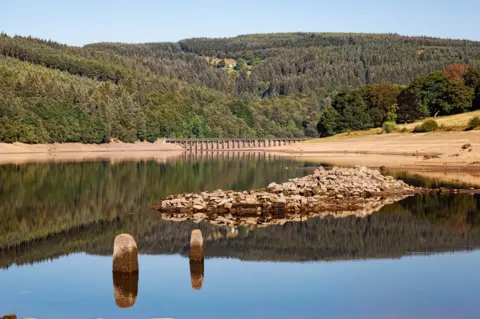 Terry Westerman
Terry WestermanRuins thought to be a church that was submerged by the creation of a reservoir have been revealed due to low water levels.
The village of Derwent in Derbyshire was flooded in the 1940s by the creation of Ladybower Reservoir.
The church spire was originally left intact as a memorial but was demolished in 1947 because of safety concerns.
The bell can still be heard ringing, as it was re-hung in St Philip's Church in Chaddesden, in Derby.

Terry Westerman, from Barnsley, photographed the ruins when he visited the reservoir on Wednesday.
"To be honest I were a bit shocked at how low it was," he said.
"I found one or two artefacts, not anything valuable, things left from the village. There were one or two bits of iron. I picked one up and it looked like an old gate catch."
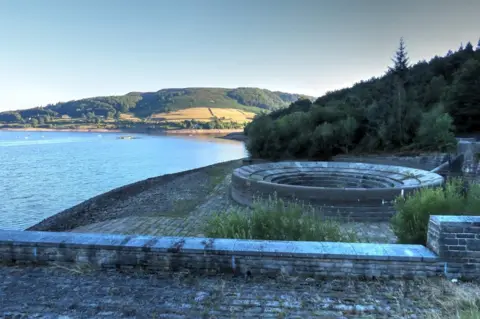 Russ Teale
Russ Teale Phoebe Cajote Wood
Phoebe Cajote WoodLadybower Reservoir was at 54.5% of its capacity as of 8 August, according to water company Severn Trent.
Customers have been asked not to use more water than necessary following the warm and dry weather.
"Our region has experienced the driest July in a century," a Severn Trent spokesperson said.
"We're asking people to be mindful of their water use, as small behavioural changes can add up to a big difference."
Howden Reservoir, also in Derbyshire, was at only 14.6% of its capacity as of 8 August.
Ralph Goodson, who lives in Matlock, often drives there for a picnic and has noticed the water getting lower this year.
"Last week we visited for the first time since April and although we knew there hadn't been much rain recently, we were shocked to see that Howden is now almost empty," he said.
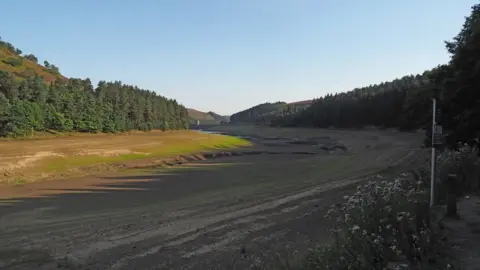 Ralph Goodson
Ralph Goodson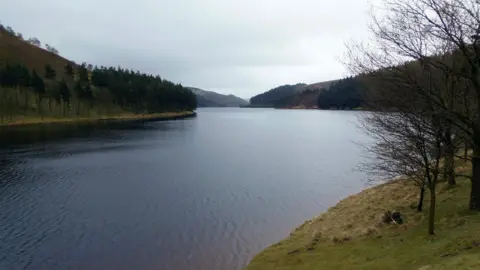 Ralph Goodson
Ralph GoodsonThe ruins that are thought to be Derwent's church, along with other remains of the village, were also exposed by low water levels in 2018.
At the time, the ruins of the stately home of Derwent Hall could also be seen.
The rare sight attracted people to the area and one man had to be rescued after he got stuck in the mud while inspecting the ruins.
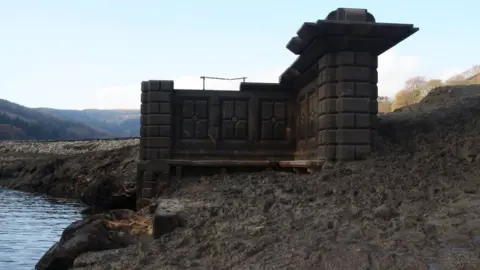 Severn Trent Water
Severn Trent WaterLadybower Reservoir was created in order to provide the growing cities of Derby, Sheffield, Nottingham and Leicester with water.
In addition to Derwent, the neighbouring village of Ashopton was also sacrificed.
Some visitors to the BBC East Midlands Facebook page remembered the reservoir being particularly low in 1976.
Kevin Ault said he visited on a school trip and walked along the bottom.
"Benjamin Outram Secondary School in Ripley took a couple of coaches there," he said.
"It was a great visit. Completely dry, apart from a small stream winding along the reservoir floor.
"Some of us jumped over it, but not me. A friend got stuck in the mud."
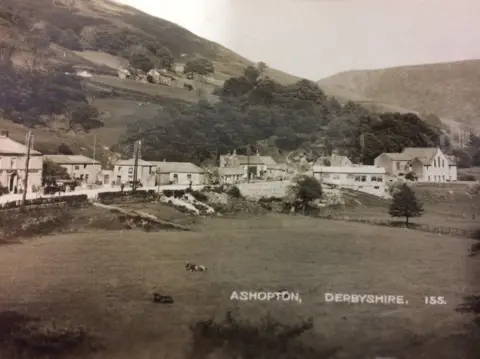
Linda De-burgh remembered seeing a small cottage and wooden gateposts in 1976.
"The one thing that sticks in my mind, I don't know why, was these gateposts looking so forlorn in the forefront," she said.
"When I think about it it was so strange and eerie at that time. A lost village gone forever."
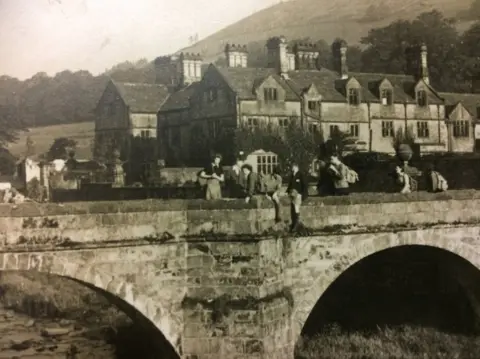
John Bennett contacted the BBC with his memories of visiting and filming the depleted reservoir in January 1996.
"I spent several hours wandering around the Derwent village site, taking video and trying to relate the remaining features to an old map," he said.
"It felt unreal to walk on the original path through the old churchyard, to explore the school and Derwent Hall areas, and to stand on the remaining bridges over the Mill Brook, which was flowing just like it used to in the past."

Follow BBC East Midlands on Facebook, on Twitter, or on Instagram. Send your story ideas to [email protected].
